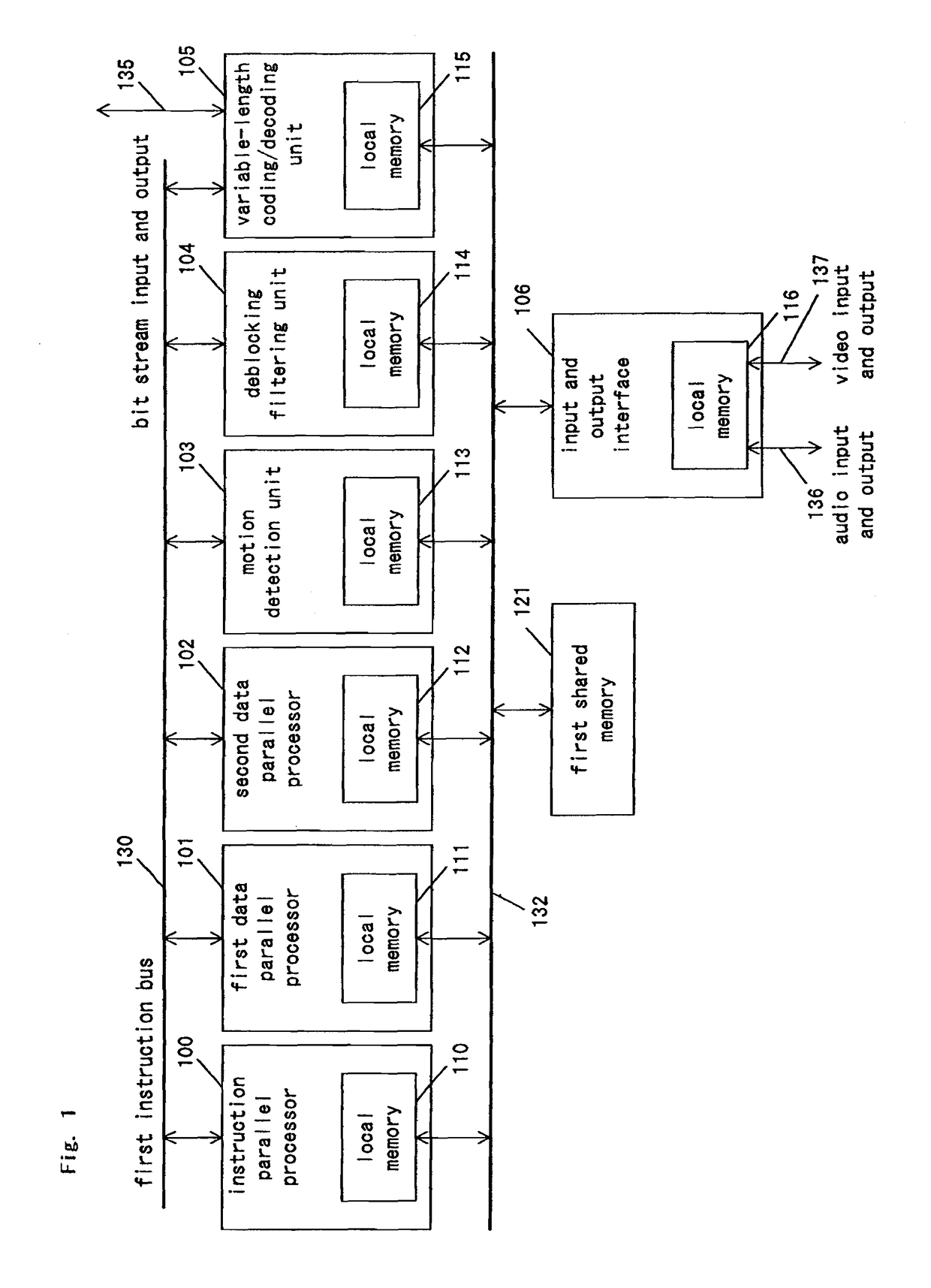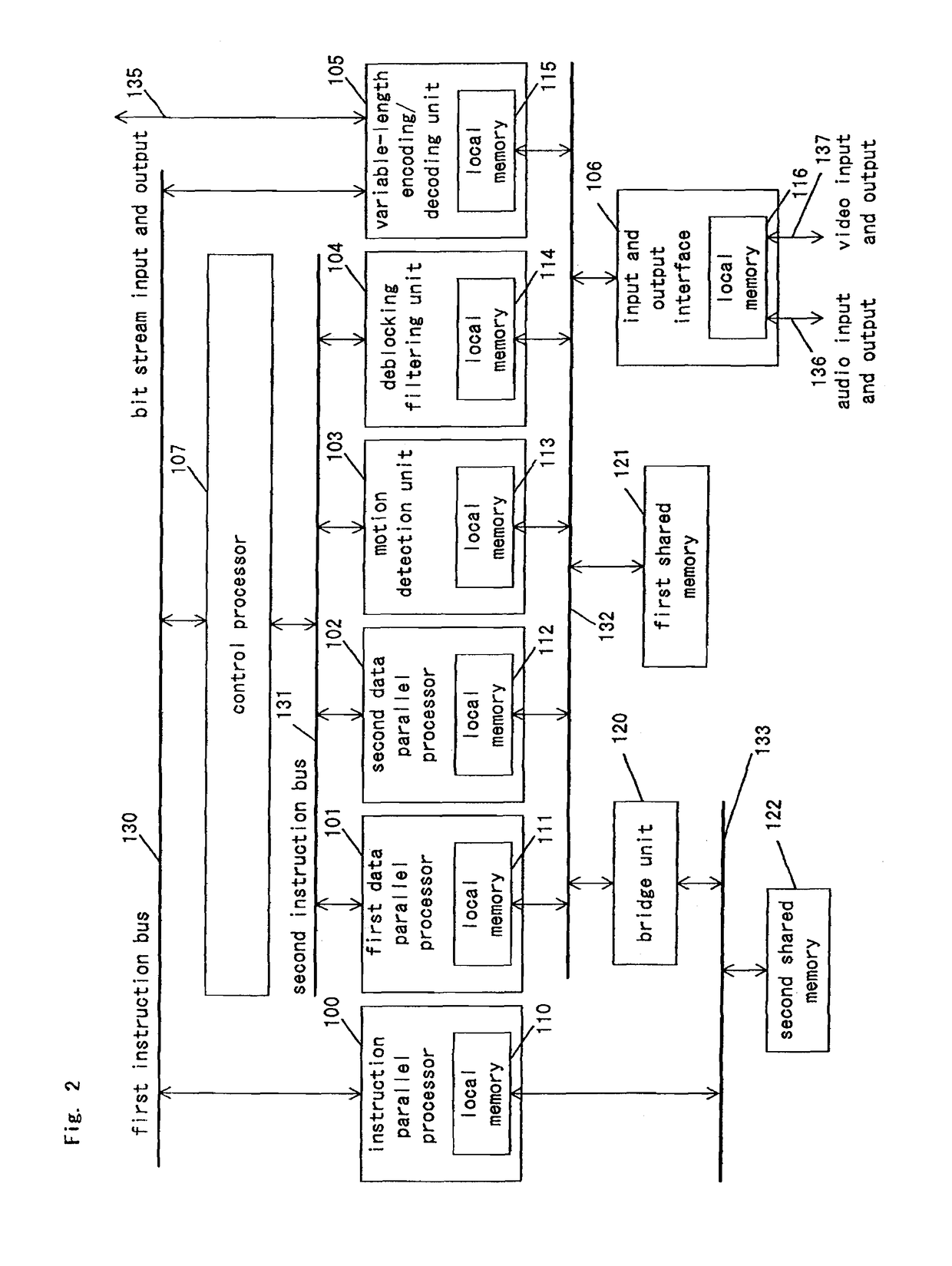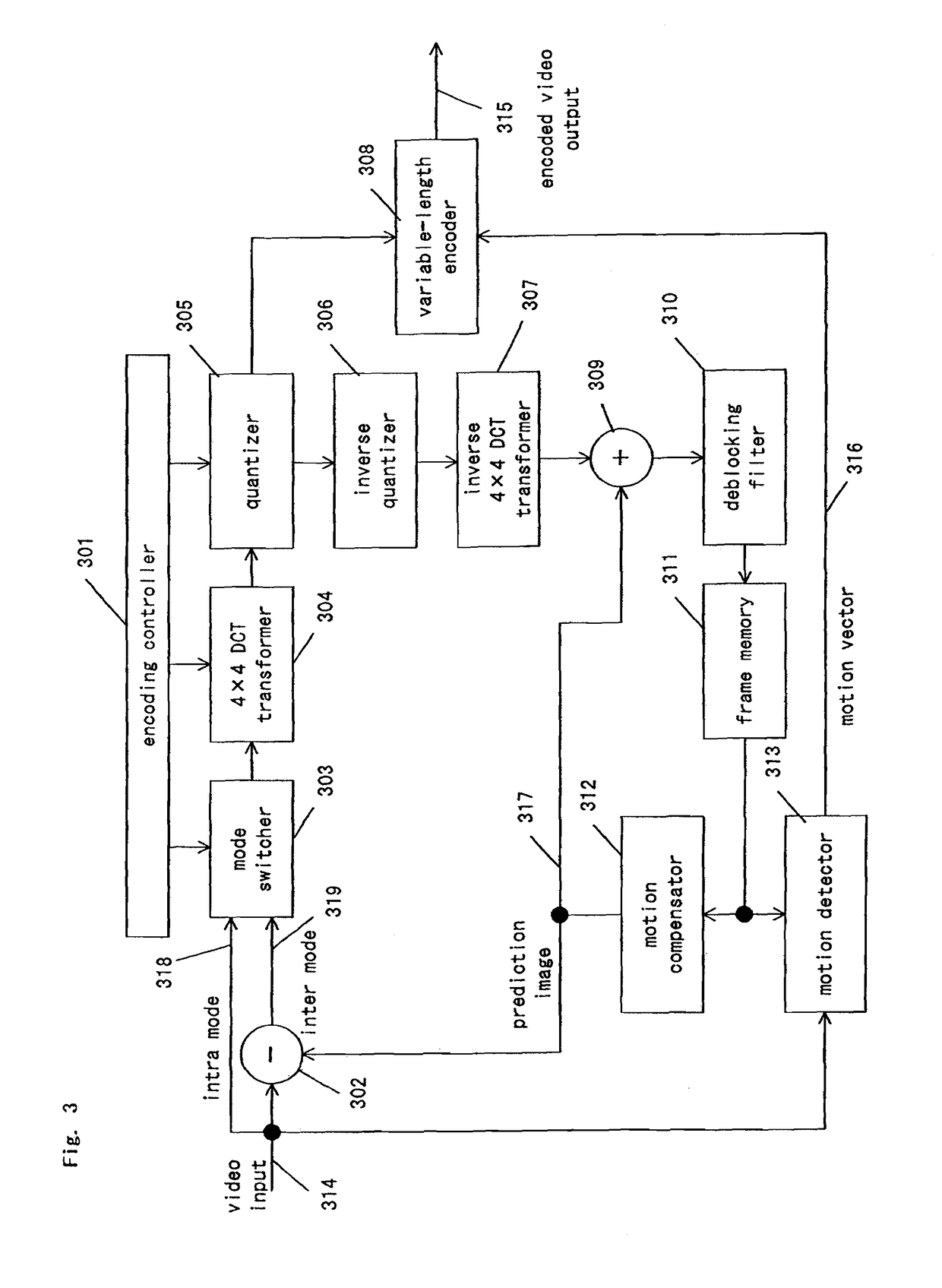Signal-processing apparatus including a second processor that, after receiving an instruction from a first processor, independantly controls a second data processing unit without further instrcuction from the first processor
a signal processing and second processor technology, applied in the field of signal processing apparatus, can solve the problems of inability to mount to the built-in system, inability to improve the processing efficiency of calculators, and large processing amount, and achieve high-performance and high-efficiency image processing. , the effect of large data processing amoun
- Summary
- Abstract
- Description
- Claims
- Application Information
AI Technical Summary
Benefits of technology
Problems solved by technology
Method used
Image
Examples
first embodiment
[0076]FIG. 1 is the block diagram of the signal-processing apparatus in the first embodiment of the present invention. The signal-processing apparatus of the present embodiment comprises: an instruction-parallel processor 100 having a local memory 110; a first data-parallel processor 101 having a local memory 111; a second data-parallel processor 102 having a local memory 112; a motion detection unit 103 having a local memory 113; a de-blocking filtering unit 104 having a local memory 114; a variable-length coding / decoding unit 105 having a local memory 115; an input and output interface 106 having a local memory 116; a first shared memory 121; a first instruction bus 130; and a first data bus 132. The processors 100 to 102 and the units 103 to 105 are connected to the first instruction bus 130, and the local memories 110 to 116, the first shared memory 121 and the input and output interface 106 are connected to the first data bus 132. The variable-length coding / decoding unit 105 fu...
second embodiment
[0092]FIG. 2 is the block diagram of the signal-processing apparatus in the second embodiment of the present invention. In FIG. 2, components similar to those of FIG. 1 are denoted by the same reference numerals, and descriptions thereof are omitted.
[0093]The signal-processing apparatus of the present embodiment further comprises, compared to the signal-processing apparatus of the first embodiment, a control processor 107, a second shared memory 122, a second instruction bus 131, a second data bus 133, and a bridge unit 120 connecting the first data bus 132 and the second data bus 133.
[0094]The instruction-parallel processor 100, the control processor 107 and the variable-length coding / decoding unit 105 are connected to the first instruction bus 130. The control processor 107, the first data-parallel processor 101, the second data-parallel processor 102, the motion detection unit 103 and the de-blocking filtering unit 104 are connected to the second instruction bus 131.
[0095]The loc...
third embodiment
[0099]FIG. 3 is the block diagram showing a video encoder in the third embodiment of the present invention.
[0100]The video encoder of the present embodiment is an encoder capable of the MPEG-4 AVC. Each component is given a name adequately expressing a function of the video encoder corresponding to the MPEG-4 AVC.
[0101]The video encoder of the present embodiment shown in FIG. 3 comprises the signal-processing apparatus of the second embodiment. Therefore, the correspondence between the components of FIG. 3 and the components of FIG. 2 will be shown first.
[0102]The processing of a coding controller 301 and a mode switcher 303 are performed by the instruction-parallel processor 100 of FIG. 2.
[0103]The processing of a motion compensator 312 and a difference detector 302 are performed by the first data-parallel processor 101 of FIG. 2.
[0104]The processing of a 4×4 DCT transformer 304, a quantizer 305, an inverse quantizer 306, an inverse 4×4 DCT transformer 307 and a reconstructor 309 a...
PUM
 Login to View More
Login to View More Abstract
Description
Claims
Application Information
 Login to View More
Login to View More - R&D
- Intellectual Property
- Life Sciences
- Materials
- Tech Scout
- Unparalleled Data Quality
- Higher Quality Content
- 60% Fewer Hallucinations
Browse by: Latest US Patents, China's latest patents, Technical Efficacy Thesaurus, Application Domain, Technology Topic, Popular Technical Reports.
© 2025 PatSnap. All rights reserved.Legal|Privacy policy|Modern Slavery Act Transparency Statement|Sitemap|About US| Contact US: help@patsnap.com



